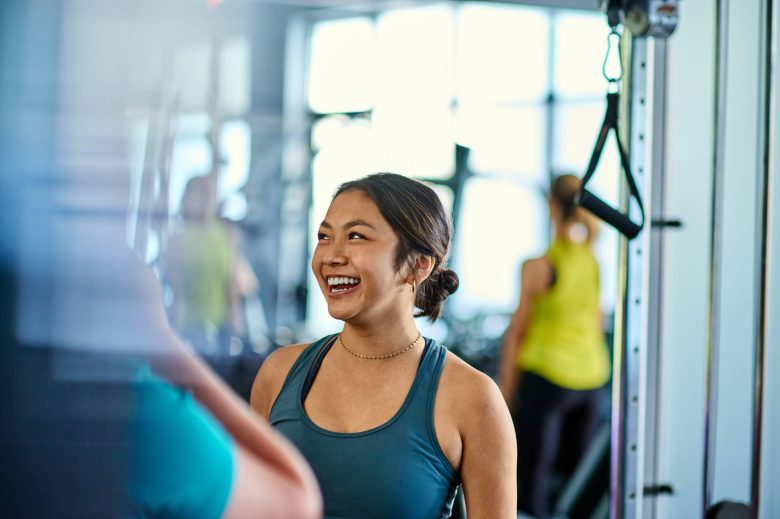It can be overwhelming to start a fitness regimen, especially when there are so many contradictory advices out there. It’s not difficult to get started with a workout. This guide will give you the basics, so that your fitness journey is enjoyable and effective.
Set Goals
Take a few moments to determine your goals before you put on your shoes. Do you want to lose weight, gain muscle, improve endurance or just for your own health? You can create a plan to match your goals by setting clear and realistic targets. Beginners can start with smaller goals like running a mile or exercising three times per week. Celebrate your progress to keep the momentum going.
Warm-up Exercises
Injuries can occur if you jump straight into a high intensity workout. Warm-ups prepare your body by improving flexibility and increasing blood flow. Beginners can benefit from simple dynamic stretches, such as arm circles, leg swungs, and a few minutes brisk walking. Warming up should last between five and ten minutes, and you should feel alert and ready.
Cardio Exercises
Cardio exercise is essential for all fitness levels, but especially beginners. Jogging, cycling or swimming are all great ways to improve your heart health, burn fat and increase endurance. Start by doing 20-30 minutes of moderate to low intensity cardio at least a couple times per week. As your fitness improves, increase the duration and intensity of your workout. Find a cardio exercise you like, and it won’t seem like a chore.
Strength Training
Strength training does not only build muscle, but also improves posture and overall health. Beginners should start with exercises that use their own body weight, such as squats and push-ups. Consider using light dumbbells and resistance bands if you are ready to add weights. Two to three sessions per week are ideal, with each session targeting a different muscle group. Focus on form rather than weight to build a solid foundation and reduce injury risk.
Exercises to Cool Down
Cooling down is an important part of any workout routine. Cooling down helps your heart rate return to a resting state and reduces muscle soreness. It also prevents dizziness. Stretch the major muscle groups that you have worked on. Hold each stretch for between 15 and 30 seconds. This time of deep breathing can help you relax, and you may also reflect on your efforts.
Nutrition Basics
What you eat has a significant impact on your results. A diet rich in fruits, vegetables, carbohydrates and fats will help you recover and fuel your workouts. Proteins help repair muscle tissue, and carbohydrates give you the energy to get through your workout. Opt for healthy, nutrient dense meals instead of processed foods. Plan your meals to maximize your performance and recovery.
Hydration
It is important to stay hydrated when you are working out. Water helps regulate your body temperature and keeps your joints lubricated. It also transports nutrients, giving you energy. Bring a water bottle to workouts and drink water throughout the day. Consider sports drinks for workouts lasting more than an hour in extreme heat. You should listen to your body. Thirst can be a sign that you need more fluids.
Rest and Recovery
Rest days are important. Your muscles can grow and heal during recovery time, which reduces fatigue and lowers your risk of injury. Beginners can alternate their workouts with lighter activities such as yoga or walking. Sleeping enough is also an important part of recovery. Aim for between 7 and 9 hours per night to maintain your energy level and keep your body well-rested.
Common Mistakes to Avoid
It’s great to start strong, but beginners often sabotage themselves by making mistakes that can be avoided. Injury can be caused by overtraining, skipping the warm-ups and not using proper form. Unrealistic goals, such as expecting drastic results in a short time, can cause frustration and burnout. Fitness is a marathon and not a sprint. Instead of focusing on perfection, focus on steady and consistent improvement.
Staying Motivated
The hardest part about maintaining a regular workout is staying motivated. Try new activities, play your favorite music, or invite a workout partner to make your workouts more enjoyable. You can also stay motivated by tracking your progress, whether it is noticing an improvement in stamina or how your clothes fit better. Concentrate on the way you feel after exercising. The sense of accomplishment, and increased energy are powerful motivations.
Fitting Fitness into Your Daily Routine
Consistency forms the basis of any fitness program. To form a good habit, schedule your workouts the same way each day. Find a time that suits you, whether it is early mornings or lunch breaks. These sessions will become part of your everyday life over time.
Turning Steps Into Progress
It may be difficult to begin your fitness journey, but with the correct mindset, goals and plan, it can be incredibly rewarding. Start slowly, be consistent, and celebrate each milestone, however small. You’ll achieve long-term success by following these basic workouts and avoiding common mistakes. Start today by putting on your shoes and getting started.
FAQs
1. What is the recommended frequency of exercise for a beginner?
Mix cardio and strength exercises in three to five sessions per week. Listen to your body. If you are sore, opt for a light workout or a day off.
2. What is the best time to exercise during the day?
It’s best to choose a time that works for you and is sustainable. Some people prefer the morning to get a boost of energy, while others like evening sessions to relax.
3. Is a gym membership required to start?
Not at all! You can do many effective beginner workouts at home using minimal equipment like dumbbells, resistance bands or your body weight.
4. How many minutes should I spend working out?
As your fitness improves, you can gradually increase the duration of your sessions. Quality over quantity is the key.
5. When can I expect to see results?
Everybody progresses at a different pace, but the majority of people begin to notice physical and mental improvements within a couple weeks after consistent exercise.




